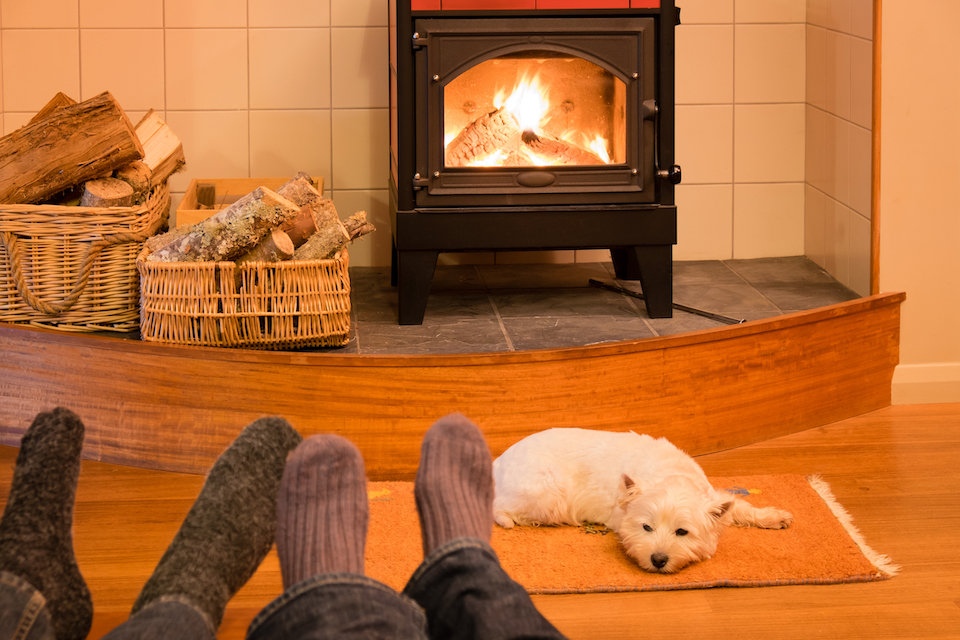How Much is a Septic Tank Installation?
The typical material costs for a medium-sized septic tank is usually around £1,200-£2,000, whereas the average cost for a large tank is around £2,900-£3,500.
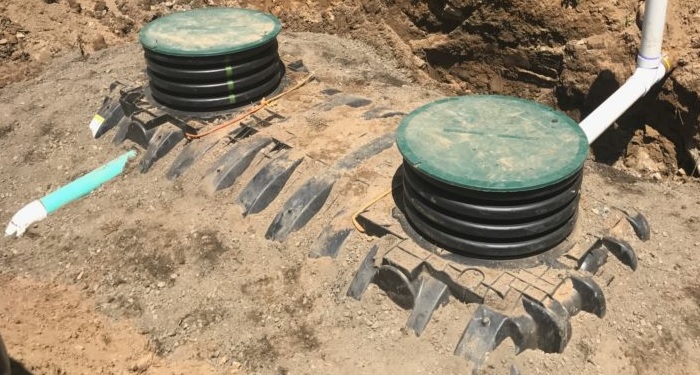
Various factors can affect the septic tank cost, including the location, type, material, and labour.
In general, there are two important decisions to be made in terms of a septic tank, depending on its intended use and the space available - the design, and the material it's made from.
What size septic tanks are available?
Septic tanks are typically between 4,500-12,500 litres. The different sizes can alter the job's overall cost as larger tanks will take longer to install.
The average cost to get a septic tank installed by a professional is around £2,400-£6,300. This includes the cost of materials, labour, and waste removal.
Septic Tank Prices
The table below highlights the average costs that you can expect to pay for different-sized septic tank installations:
| Septic Tank Size | Average Cost | Duration |
|---|---|---|
| Single-chamber 4500 litres | £2,400-£3,600 | 2-3 days |
| Single-chamber 8500 litres | £3,200-£4,200 | 2-4 days |
| Single-chamber 12500 litres | £4,100-£5,500 | 3-5days |
| Multi-chamber 4500 litres | £3,000-£3,500 | 2-4 days |
| Multi-chamber 8500 litres | £3,900-£5,700 | 3-5 days |
| Multi-chamber 12500 litres | £5,700-£6,300 | 5-7days |
- How Much is a Septic Tank Installation?
- How Much Does a New Septic Tank Cost? (Supply Only)
- Additional Costs of Septic Tank Installation
- Tradesmen Cost to Install a New Septic Tank
- Who Needs a Septic Tank Installed?
- How Long Does It Take to Install a Septic Tank?
- Choosing a Septic Tank
- How Much Does Septic Tank Emptying Cost?
- FAQs
How Much Does a New Septic Tank Cost? (Supply Only)
The material used to construct your septic tank is a cost factor in the overall cost of installing a septic tank. The higher the quality of the material that is used, the longer you can expect the septic tank to last. However, higher-quality materials are also more expensive.
Budget septic tanks are usually made from concrete whereas high-quality tanks are usually made from fibreglass materials. Whether you choose to buy a single-chamber septic tank or a multi-chamber tank can affect the supply costs as well.
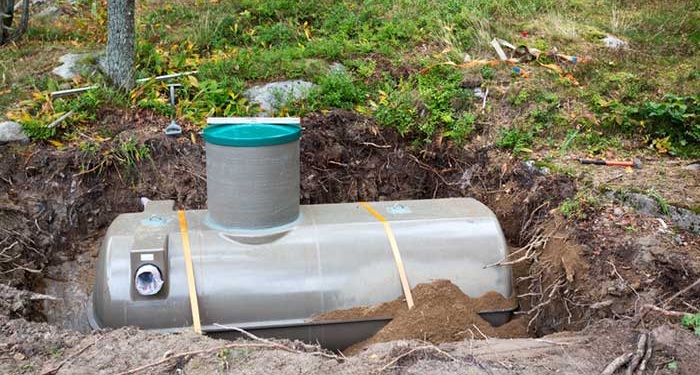
A typical single-chamber septic tank is around £1,200-£3,700 and a multi-chamber septic tank is usually around £1,800-£4,500 on average.
The table below highlights the costs you can expect for the different types of septic tank:
| Septic Tank Material | Average Cost Per 1000 Gallon Tank |
|---|---|
| Concrete | £1,500-£2,000 |
| Plastic | £1,000-£1,500 |
| Fibreglass | £600-£1,400 |
Additional Costs of Septic Tank Installation
You may need to consider some additional costs when you have a septic tank installed by your home. You may also need to think about the costs of maintaining the tank. Although it only needs minimal maintenance, it's still an additional cost that needs to be considered.
The recommended maintenance of a septic tank is a yearly pressure wash to keep it in its best condition. A professional pressure wash on a septic tank will cost around £100-£200.
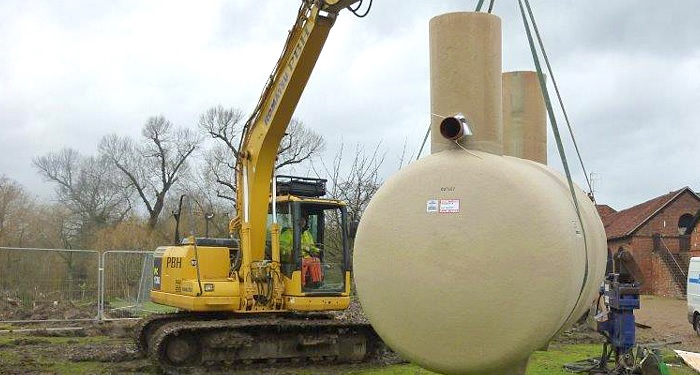
Your septic tank may also be prone to weed growth due to the surrounding ground. If that is the case, you may need to spray weed killer on your septic tank. It's recommended that you do this twice a year. You can purchase a large tub of weed killer for around £30-£60.
Soakaway Installation
A drainage system is now part of building regulations, so you will need to install a septic tank soakaway system.
A soakaway provides a method for safely dispersing the treated effluent into the surrounding soil. After solids settle in the tank, the liquid effluent flows into the soakaway system, where it drains through soil layers, undergoing natural filtration and treatment.
This type of drainage system prevents groundwater contamination, helps reduce surface pooling and complies with environmental regulations by ensuring your waste is properly managed on-site.
A soakaway installation will usually cost around £500-£800 and will need to be replaced roughly every ten years depending on its condition.
Driveway Installation
There are a number of reasons why installing a new driveway is a good idea when you have a septic tank.
Firstly a driveway can offer easier access for machinery when you go to install your septic tank. Without a driveway your garden could be damaged in the installation process and could make the installation take longer and cost your more.
A clear, accessible surface will also be required when it needs emptying and in some rural areas, it is a legal requirement for health and safety reasons.
Driveways are not just a practical solution to these issues, they can also improve the look of your house and potentially even add value to your property.
There are a variety of driveway materials you can choose from including gravel, concrete and resin. You can expect to pay between £1,000 – £12,000 for a driveway installation depending on which material you choose.
Hiring A Gardener
Hiring a gardener when you have a septic tank installed is a good idea for practical and aesthetic reasons.
When installing a septic tank there is heavy machinary involved and a lot of soil that will be removed. Hiring a gardener can help restore your lawn and garden back to its original state once it is in place.
A gardener will also have a good understanding of soil types and drainage so can help prepare the ground around the tank, making sure no issues such as water pooling does arise. If you have overhanging trees or hedges they can also remove these prior to installation.
Lastly they can help suggest plants that have shallow roots that can help stabilise the soil around the tank as well as designing planting landscpaes around the area that can help create a visual barrier longterm.
To hire a gardener, hourly fees can range from £12 - £59 per hour for general cleaning up to £90 - £120 per hour for hedge cutting.
Fence Installation
Having a fence installed could be a good way to protect your septic tank and keep it safe for people and pets.
Having a clearly fenced area will help landscapers, contractors, or future homeowners understand where not to dig. This will help reduce the potential risk of damaging pipes or the tank.
It is important you do not fence of the area completley as you will still need to access to the lid when you need to empty it and for future maintenance. You also need to understand where to put the fence posts so you don't block the water drainage around the tank or get to near the septic pipes.
Hiring a professional to install you fence is the best option to ensure all of these things are carefully planned out.
Individual fence panels can range from as low as £40 for a simple traditional lap fence panel, up to £300 for more luxury fence panels. To fit the fence posts and panels, for an average sized garden, expect to pay around £500 in labour. This could be lower if you are just having the area of you tank fenced off.
Skip Hire
Installing a septic can can cause a lot of mess so hiring a skip to get rid of the waste is the easiest option.
Depending on the size of your tank and the mess created, with depend on the size of skip you need.
A mini 2-3 yard skip will cost between £60-£120, whereas a larger builder 6-8 yard skip will cost £150-£375. Costs are for hiring the skip for a 1 week period.
Tradesmen Cost to Install a New Septic Tank
The labour price for fitting a septic tank is usually around £1,200-£1,800 for a straightforward job. If the space is hard to access or any problems arise during the installation, you can expect this cost to increase so you should be sure to budget for large labour costs.
You may be able to bring the labour costs down if you do some or all of the excavation work yourself. However, you will most likely have to hire a digger to do this part of the work yourself.
On average, a septic tank specialist will charge around £150-£250 per day. For this type of work, though, there will usually be more than one contractor working in a team, and the labour costs will be factored into the overall cost of the job.
Those based in the London area can expect to pay more for the cost of labour than those based in the North or other parts of the UK.
Who Needs a Septic Tank Installed?
Septic tank installation is most commonly required for homeowners and property developers in rural or remote areas. This coincides where connection to a centralised mains sewage system is not available or a practical choice. These type of systems offer a self-contained solution for managing household wastewater, making them an essential bit of kit for off-grid living.
People who typically have a septic tank installation include:
- Rural homeowners: People living in countryside properties often rely on septic systems for wastewater treatment due to having no access to public sewer lines.
- New builds on undeveloped land: If you are developing a property in an area without an existing sewage infrastructure, a septic tank becomes a necessary part of the planning process.
- Farms and agricultural properties: Buildings located far from their local sewer services often use septic tanks to handle wastewater independently.
- Holiday homes or cabins: Seasonal properties or remote homes like cabins often depend on septic tanks. This is usuallsy due to the fact that installing a mains sewage connection is not cost-effective.
Septic tanks are useful because they help eliminate waste naturally, through use of a filtering process.
A septic tank efficiently manages both black water (from toilets) and grey water (from showers, sinks, washing machines and dishwashers). It filters it and allows the treated effluent to safely drain away into the surrounding soil.
Setic tanks therefore play a critical role in providing sustainable water management for properties outside the reach of traditional sewage networks.
How Long Does It Take to Install a Septic Tank?
The time it takes to install a septic tank can vary. Some factors that can affect the time it takes to install include the size of the tank, the materials used, and the area of excavation. Ease of access can also play a part in the amount of time it takes.
The average septic tank installation job usually takes around 3-6 days to complete.
Choosing a Septic Tank
There are several different types of septic tank, and they are often made up of different materials. They are usually made up of either concrete, brick, or fibreglass.
The most common type of septic tank in the UK is the onion-shaped tank. Below is a list of the various septic tanks and the characteristics of each type:
Brick and Concrete Septic Tank
Most older septic tanks are made from brick, stone or concrete. These septic tanks usually include two chambers next to each other and a pipe that supplies air to the tanks. These can still be found in many areas; however, they are not common in the UK.
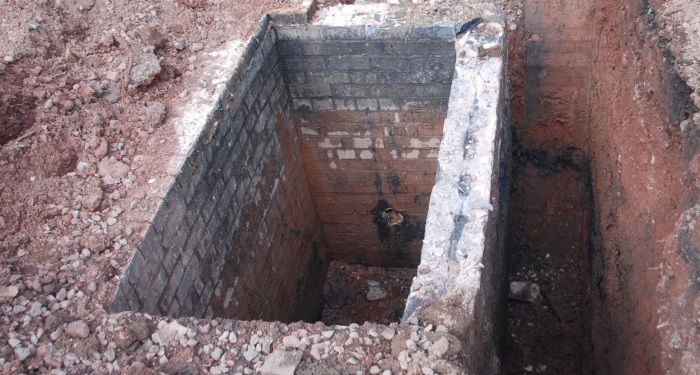
Pros:
- Contains two chambers
Cons:
- Not that common in the UK
Onion-Shape and Torpedo Tank
The onion-shaped fibreglass septic tank is the most common type of tank installed in the UK. There is also a "torpedo" tank. This is a cylindrical tank. Both of these types of tanks go into the ground similar to the more traditional brick and concrete tanks.
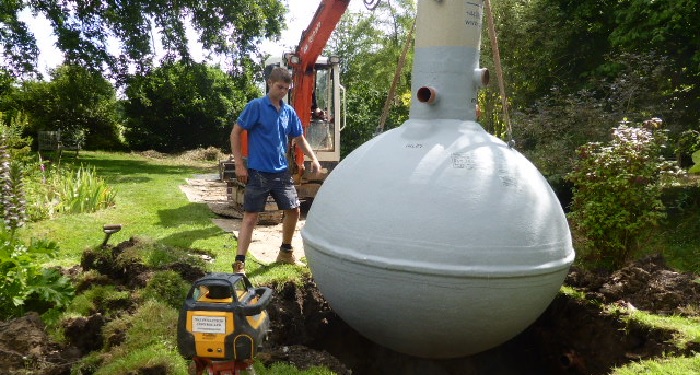
Pros:
- Most common type of UK tank
Cons:
- There can be issues with their outlet level
Over-Ground Septic Tank
Another type of septic tank is one that goes above the ground. Overground septic tanks are usually intended to be temporary. Unlike other types of septic tank, these don't need planning permission to be installed.
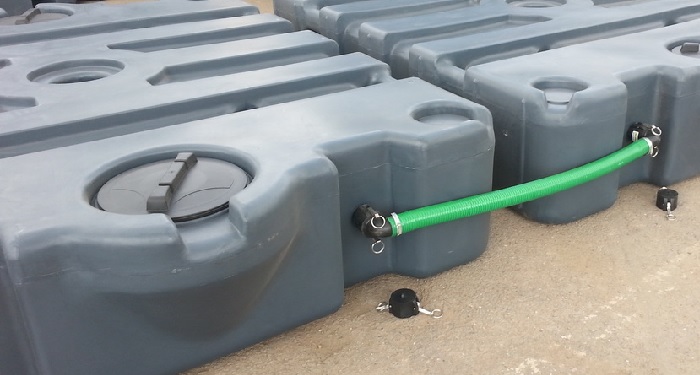
Pros:
- They don't need planning permission
Cons:
- Intended as a temporary measure
How Much Does Septic Tank Emptying Cost?
On average, a contractor will charge around £150-£250 to professionally clean and empty a septic tank. However, the cost of the service will vary depending on a number of factors including the size of the tank, the ease of access, and the time it takes to complete the job.
Hiring a professional to come to do your septic tank emptying is the best way to maintain it and keep it in a good state.
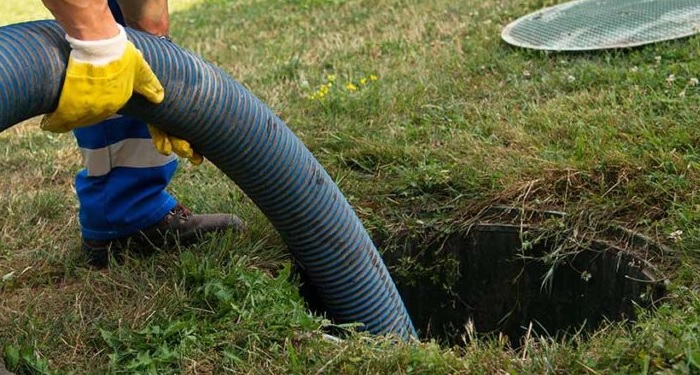
The tradesman will visit your property and assess the scale of the job and insert a special hose into your tank designed to suck out all of the waste that has accumulated.
Once the tank has been safely emptied, the tradesman will then wash the chamber to remove any leftover solids that remain in the chamber.
It will also be inspected for any damage or cracks. Any repair work that is needed on the chamber should be completed after the tank has been emptied.
FAQs
Q: How does a septic tank work?
A: A septic tank treats domestic wastewater and sewage by allowing bacteria to naturally break down any potentially harmful substances.
The solids will sink to the bottom of the tank, meaning the settled liquid on top contains a very low level of contamination. This can safely be drained away into a soakaway and the ground.
Q: How often does a septic tank need to be emptied?
A: As a general rule of thumb, your septic tank should only need to be emptied every 3-5 years.
Q: Why does my septic tank need to be emptied?
A: Some of the solids collected at the bottom of the septic tank will be digested by bacteria and disappear.
However, the remaining sludge will build up over time and will need to be removed. Emptying a septic tank is the best method of septic tank maintenance.
Q: Why does my septic tank have scum on top?
A: The scum layer on the top consists of fat, oil, and grease. This is a result of normal domestic activities such as cooking and washing up.
Q: What should I avoid pouring down my drains if I have a septic tank?
A: You should avoid pouring bleach down the sink or toilet if you have a septic tank. You should also limit the amount of fat that you dispose of down the drain.
Some other things that may have a negative impact on the bacteria in your septic tank include animal litter, coffee grounds, cigarette ends, sanitary items, greases and fats, paints, detergents, paper towels, wet wipes and pesticides.




